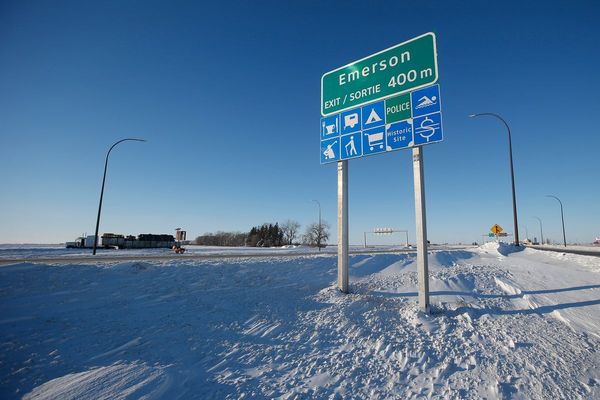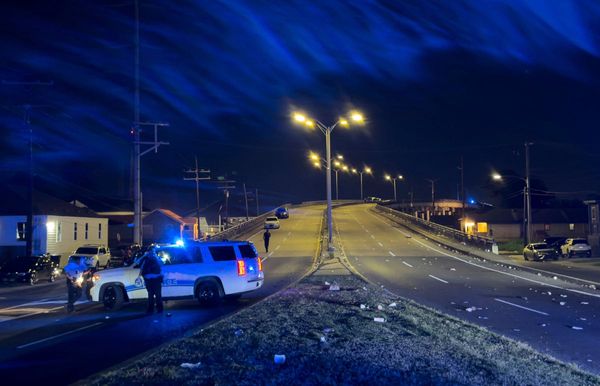
Chopping down trees is not how most people would expect a river restoration project to begin, but Janne Raassina – who is expertly using a chainsaw to take down four or five earmarked trunks around the Särkkäjoki River in remotest eastern Finland – explains that the rotting wood will be hugely useful to the ecosystem.
“This is a huge buffet for insects, and it’s something that has been missing in our nature for 100 years,” he says. “We are creating the food chain from scratch.”
Finland is the most heavily forested country in Europe, with about 76% of its land area cloaked by trees. However, this impressive statistic disguises the ecological damage that has been inflicted by the forestry industry over the last century or so.
The old growth has almost entirely vanished, replaced by the skeletal monocultures of commercial plantations; today, less than 5% of Finland’s forest cover is more than 120 years old. These are a pale imitation of the lichen-laden, berry-filled forests of old – and the wildlife has suffered as a result.
Rivers have been another casualty of Finland’s rapid industrialisation. From the 1850s, before the age of roads and rail, its waterways were engineered into unobstructed channels to create a vast fluvial transport network. Rapids were removed and bends straightened to allow logs to float hundreds of miles downstream for processing. The supply of dead wood that would once have fed into the rivers dwindled as the surrounding birch, pine and spruce was cleared.
Though timber floating stopped by the 1980s, its legacy of sterility persists: the diversity of habitats that would have existed throughout the meanders and wetlands of a natural river system never returned, and the forestry industry continues to deprive these ecosystems of their dead wood. Studies of individual rivers have shown, in some cases, the complete decimation of once-thriving populations of fish.
The stream that flows before us looks healthy enough, but, says Raassina, it is ecologically dead. All the creatures you would expect to see here – including fish, mayflies and other insects – have vanished. An investigation into the tributaries of the Lieksanjoki River failed to return a single brown trout. “We’re basically starting from zero. Our nation has been so shortsighted,” says Raassina.
He and his two contractors, Janne Ratilainen and Henri Leskinen, have been tasked with restoring life to this 12km (7.5–mile) stretch of the Särkkäjoki, as well as 1.5km of another stream, the Rännänjoki, that crosses into Finland from Russia. Both flow into the larger Lieksanjoki river in the North Karelia region of eastern Finland.

As well as adding dead wood to the water, the restoration work has involved adding gravel to the riverbed, recreating old spawning grounds for fish, and moving rocks from the riverbank into the water to hide the juveniles from predators. “The fish have all the instincts, but nowhere to practise them,” says Raassina.
Some might hesitate to call this rewilding; with the need for chainsaws and a lot of manual labour, no one could suggest that they are taking a hands-off approach. However, the emphasis is ultimately on creating an ecosystem that will sustain itself over time, without the need for constant intervention.
Raassina’s enthusiasm for the concept is immediately apparent: he has turned up for the day in a hoodie and a baseball cap, both emblazoned with “Rewilding” in an eye-catching comic sans. “I think rewilding is a really good term. I haven’t found any better in Finnish,” he says.
While the focus is initially on creating healthy habitats, the ultimate mark of victory will be whether the trout return to them. Ideally, these would repopulate the river by themselves, but given the absence of the species in the surrounding area, it is likely that they will have to be reintroduced.
It is a small start to a monumental task. The country has about 650 rivers. About 90 of these are major rivers that discharge into the sea or across borders; the rest are tributaries. But the Finnish public has embraced the task of river restoration. Because 60% of Finland’s forests are divided up between hundreds of thousands of private landowners, this has created plenty of work for Raassina, who initially turned down the project because he was too busy.
What makes this project notable, however, is that the state-owned forestry company Metsähallitus is at the helm. It owns almost a third of Finland’s land, and without this powerhouse onboard, efforts to restore life to the “land of a thousand lakes” will always be piecemeal. If the agency can be persuaded of the value of this work, the potential for Finland’s river systems is enormous. Metsähallitus has worked on water-based restoration projects before, but this is the first time it has explicitly addressed the small creeks and their catchment areas that crisscross the larger part of the land.
“Metsähallitus has been known for restoring swamps and marsh mires, but not so much creeks, rivers and lakes. But more and more, the focus is also turning to these water ecosystems nowadays,” says Arttu Kuiri, who designed the North Karelian part of the programme. He adds that every single one of Finland’s smaller streams would benefit from restoration, but with funding of just under €1m they had to settle on nine river basins.
“People are starting to understand that rivers and clean waters are like the heart and lungs of the country,” says Kuiri. “Finland doesn’t really have anything else other than nature, and if we are going to ruin that, it doesn’t end well.”
The scale of the damage means that wholescale river restoration will be no easy task. At Särkkäjoki, Raassina points out that a layer of sediment has gathered on one of the larger rocks. It is barely noticeable – a fine dusting of dirt – and yet it points to another major problem: soil erosion. Finland’s vast peatlands have been carved up by drainage ditches over the years, destabilising its once-waterlogged soils in the name of timber production. If the country is to have healthy rivers again, looking beyond the banks and towards the wider landscape will be essential.
Kuiri agrees on the need for humans to set the wheels in motion. “We had good rivers and they have been healthy, but in a hundred years we have done so much bad to them. We need to revoke that – and the stones won’t move themselves.”
For now, in North Karelia, the Särkkäjoki looks like it has lost a fight with a particularly industrious beaver – and that, of course, is the point. The chainsaw has done its work.







